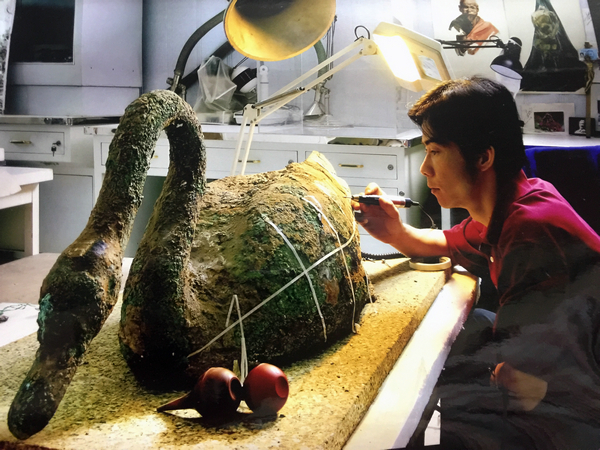 |
|
Ma Yu repairs a bronze swan unearthed in Xi'an. ZHANG TIANZHU/FOR CHINA DAILY |
Traditional tools
Lan also has some traditional tools, which he uses frequently. About 10 years ago, he asked a carpenter in a nearby village to make him a wooden stake.
Two sticks at the top of the stake can be removed, allowing restorers to put the upper part of a warrior's body on it. The lower part of the body is later rejoined to the upper.
"Some industrial design researchers offered me a new steel stake, but for now, I prefer to use this one, as it's simple and convenient," Lan said.
He often imagines himself as a doctor diagnosing diseases during the Qin Dynasty (221-206 BC).
"There are many different types of doctors in the world, but few could have diagnosed and treated those Qin warriors, who lived over 2,000 years ago," Lan said.
Over the years, the Terracotta Warrior pits have experienced fires, collapses and flooding. Sometimes, the conservator-restorers have also been unable to restore the warriors' original appearance.
Legend has it that the troops of Xiang Yu, a warlord in the late Qin Dynasty, once opened a burial pit and removed weapons held by the figures. Many of the figures were also reportedly smashed.
"In some cases, we have been unable to locate the remaining parts of Terracotta Warriors that have been assembled for the past year or two. When this happens, there is nothing to do but stop work," Lan said.
In the No 1 pit work area, there are many half-completed figures-some with missing arms and others with smashed legs bound with rope.
"We sometimes have to stop halfway through the restoration work and wait for up to two, three or four years to find the remaining parts. However, there is always the possibility that they won't be located," Lan added.